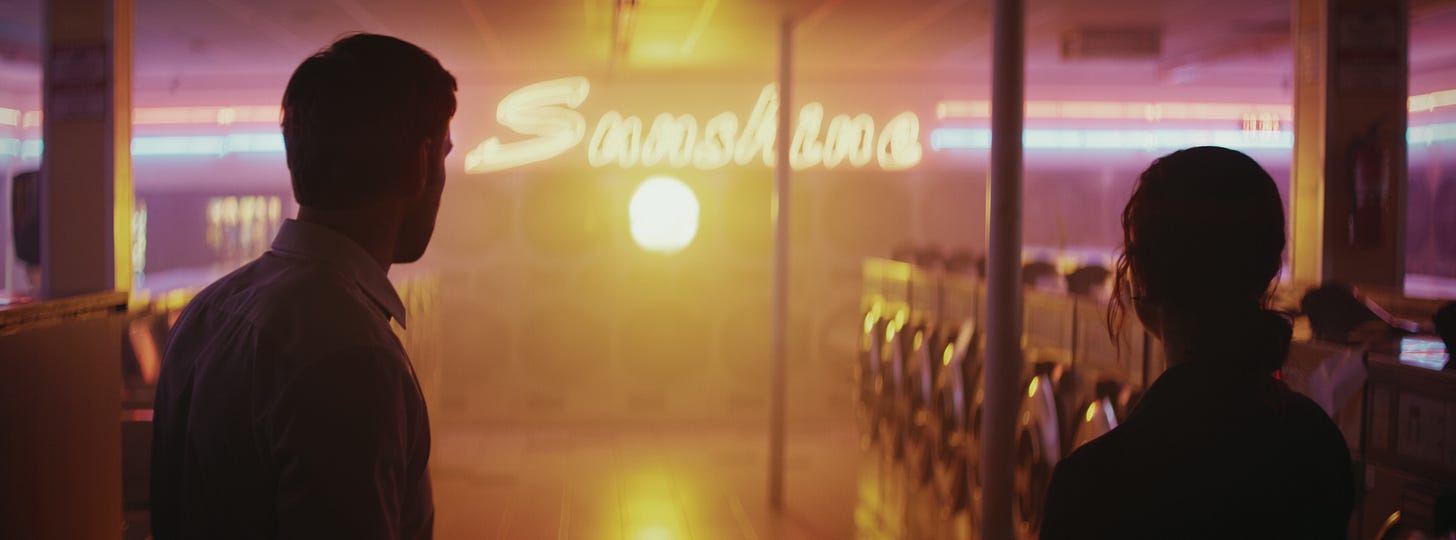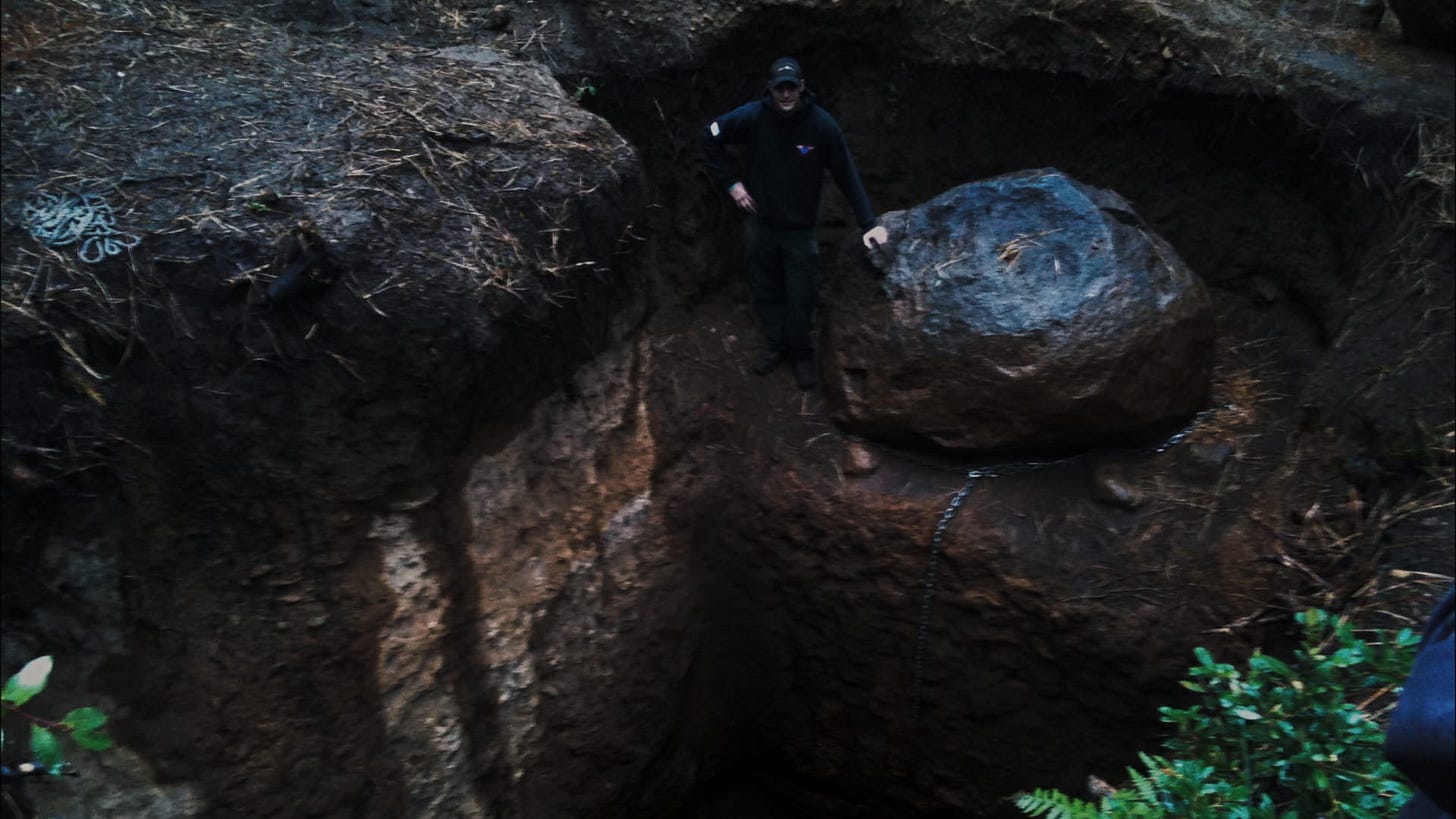The 31st edition of the Slamdance Film Festival takes place in Los Angeles, California between February 20 and 26, 2025. The festival lineup will also be available to view virtually from February 24 to March 7 at https://www.slamdancechannel.com. You can buy a virtual pass for Slamdance over at the festival’s official website.
Banr (dir. Erica Xia-Hou)
Credit where it’s due: while not entirely successful, Erica Xia-Hou’s Banr is the kind of swing for the fences filmmaking I was hoping to see more of from this year’s Narrative Features strand. It’s also a bit of a surprise as a debut from Xia-Hou, whose prior credits include acting in, writing, and editing major productions in China starring the likes of Jackie Chan and Tony Leung Chiu-wai. Banr has her in the roles of director, writer, editor, co-star, and co-producer, filming on a low budget with non-professional actors in a frenetic portrayal of Alzheimer’s disease tearing a family apart.
The film opens with Liu Ximei (Sui Li) at a nursing home watching a video of her husband Zhang Jianjun (Baoqing Li) explaining that he’s dead, leaving behind recorded videos to help her remember the past. Revealing this information at the outset before flashing back initially comes across as trite, but Xia-Hou’s structure and editing makes the information irrelevant. Frequently cutting back and forth through time and unfolding in fragmented scenes, Banr remains unsettled for most of its runtime to approximate the lack of control when dealing with Alzheimer’s.
The key word being approximate, as Xia-Hou thankfully avoids keeping her film strictly in Liu Ximei’s perspective. Banr frequently switches perspectives between the couple, at one point showing Zhang’s dreams. Rather than take the route of trying to portray Alzheimer’s, Xia-Hou lets her film unfold like it’s flipping back and forth through a rolodex of memories, and the chaotic jumbling conveys the stress and devastation of navigating a loved one’s crumbling awareness.
There are brief periods when Banr comes close to realizing its ambition, where the cumulative history of this couple’s experiences collapse into compelling, sensorial moments. But Xia-Hou frequently pulls back, and eventually runs to the safety of narrative and convention to ground her film. There’s a scene where Zhang heads back to his apartment and the film begins to crosscut between him and Liu back home, an attempt to build tension as he’s left her unattended. It’s a jarring scene because of how it suddenly introduces a contrivance that rings false compared to everything surrounding that moment.
As Banr continues, Xia-Hou settles into sentimentality as she pushes a message about love being the only constant through tragedy. It’s not so much the message that’s the issue as it is the sappy execution of it. The film goes from compelling experimentation to hammering its themes with a blunt force that clashes against its lack of cohesion.
Portal to Hell (dir. Woody Bess)
The road to hell is paved with good intentions and so is Portal to Hell, an uneven comedy that wants to be a satire on Los Angeles and a sincere look at how guilt and grief go hand in hand. Debt collector Dunn (Trey Holland), hating his job and getting over the loss of his brother, is the one to discover the portal in a laundromat dryer, although no one else seems too bothered by it. Eventually a demon named Chip (Richard Kind) pops out and explains to Dunn that he’s here to collect the soul of Dunn’s dying neighbour Mr. Bobshank (Keith David). Dunn sees an opportunity to save someone’s life and agrees to give Chip three souls in exchange for his neighbour’s safety.
Writer/director Woody Bess lucked out getting the likes of David and Kind in his debut, along with a cameo by MadTV star Michael McDonald. All three give solid performances that show off their reliability as comedic performers, with Kind providing the film’s few funny moments as a demon who loves his job. Aside from that, Portal to Hell is overly corny as a comedy, which makes its last act switch to sappy sentimentality unsurprising. One of the few things going for it is its matter of fact approach to the portal itself, and how people like laundromat manager Ed (Romina D’Ugo) treat it like an annoyance that will only make their job more difficult. Bess’ running joke that nothing really fazes Angelenos works because it’s part of the film’s DNA and shown rather than told, a trait that should have been applied elsewhere in his film.
American Theater (dirs. Nicholas Clark & Dylan Frederick)
A documentary full of unrealized potential, Nicholas Clark and Dylan Frederick’s American Theater follows Brian Clowdus, a self-described entrepreneur who was the artistic director of an immersive theatre company in Atlanta that pulled off elaborate stagings of plays and musicals. In 2019, Clowdus was “cancelled” after multiple allegations of aggression, sexual harassment, racism, and unsafe work conditions forced him to resign. Since then, Clowdus rebranded himself into a Republican Trump supporter and returned to Atlanta to direct a new, immersive play about the Salem witch trials, with a cast of friends also exiled from their respective arts communities over their problematic views.
Clark and Frederick take a strictly observational approach to Clowdus and his troupe and their politics, to the point where there’s almost an aversion by them to tipping their hands in any direction. If anything, Clowdus gets judged more for his arrogance and entitlement in the ways he bulldozes over everyone else to get his way, safety and standards be damned. His play’s eventual undoing turns out to be something he was warned about from the very start, which Clowdus shrugged off. Once faced with the consequences of his recklessness, he simply ignores the reasons so he can feed it to his persecution complex over being cancelled by “woke” liberals.
There are plenty of chances for American Theater to coalesce into a strong statement. The documentary also follows Clowdus as he travels between Atlanta and Florida, where he’s running a campaign to become the Republican candidate for a state congressional seat. Watching the behind the scenes process of a conservative, reactionary play has a compelling quality given the commonly liberal association with these kinds of artistic spaces, along with a group of “outcasts” who used to exist in those spaces finding their own warped sense of community. There’s a bigger picture American Theater could have engaged with. Clark and Frederick prefer to keep a narrow view on their subjects, resulting in a muddled perspective and a missed opportunity.
The Hole Story (dir. Elijah Sullivan)
I’ll admit it hasn’t been the best edition of Slamdance for me, although I’m sure the reviews have been reflective of that. This is an inevitability of covering film festivals, especially one filled with largely unknown quantities. Sometimes it amounts to playing a game of chance, with the hopes of landing upon a true hidden gem. But getting to that point requires a lot of digging through titles, and while not every film is an outright success, the independent nature of these productions usually means they contain something of interest. If any of the films I covered this year didn’t have anything worth discussing, even in a critical manner, I wouldn’t have bothered finishing them.
So let me save the best for last with Elijah Sullivan’s The Hole Story, a modest documentary that turned out to be the highlight of my experience watching Slamdance titles this year. Sullivan comes from the town of Mount Shasta, California, named after the volcano it’s next to. In 2009, someone discovered a strange hole on the volcano’s slope approximately 60 feet deep and clearly man made given the equipment found at the bottom. Beyond the few items left behind, there was no other evidence of who dug the hole.
Sullivan uses this mystery to dive into the history of his town, framing it as his own investigation of who might have been responsible for the hole and what might have been found in it. The most obvious theory, and the one the authorities believe, is that people were illegally mining for minerals. Sullivan presents different theories, each one providing background on Mount Shasta’s history of attracting “spiritual tourists” and cults who believe in a theory that the volcano contains a secret, underground alien civilization. The Hole Story interviews several of these believers, although they mostly amount to red herrings when it comes to figuring out the truth about who dug the hole.
The film does eventually get answers of some sort through someone who claims he worked on the dig, but his story only brings up more questions. By the end, it doesn’t come as a surprise that Sullivan isn’t particularly invested in solving the mystery. The portrait he paints of Mount Shasta, while shot like a stylish investigative report, is one of people causing destruction in their pursuit of proving con artist cult leaders correct. By the end, the origins of the hole remain unknown because there probably isn’t anything to find. It amounts to a symbol of how deep people can go when fooled by a deceptive belief system. In this case, it’s about 63 feet.






